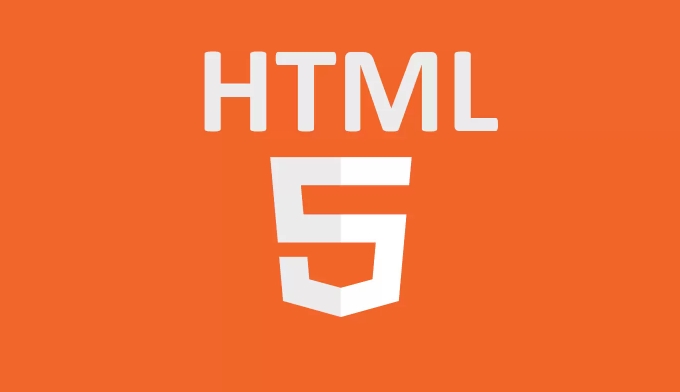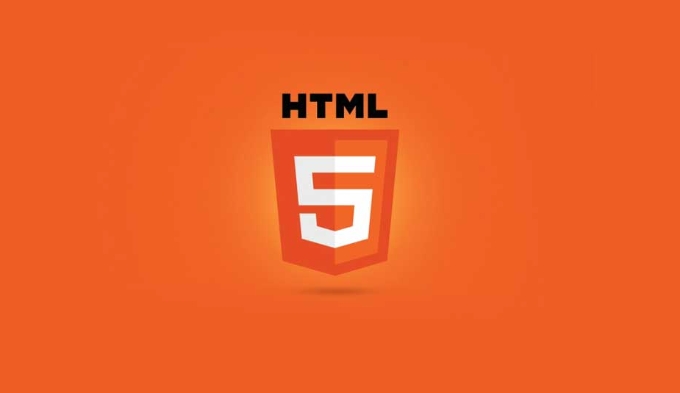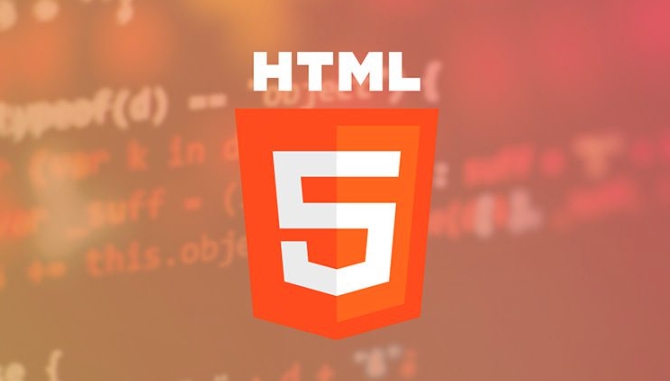The main element is used to wrap the core part of the page that is directly related to the current content and does not contain duplicate content or auxiliary areas. 1. The main tag clearly identifies the main content area of ??the web page; 2. It improves barrier-free experience and allows screen readers to jump quickly; 3. Each page can only have one main element, which should be placed in the body and exist independently; 4. It is often used with semantic tags such as header, nav, footer, etc. to build a clear structure; 5. When using it, avoid nesting unrelated interactive components or content that affects the main line logic.

Using the main element of HTML5 to identify the main content is actually a practical but often overlooked approach. Simply put, the main tag is used to clarify the "most core" content area in the page. It's not for layout, but for semantics and accessibility - allowing screen readers, search engines, and even browser plug-ins to more accurately determine which piece of content is what users are really looking at.

What exactly should the main tag cover?
Many people will get confused at the beginning: Does main equal to the content area? Not exactly. Its function is to wrap the main content of the document or application, that is, the core part directly related to the current page.

For example, in an article page, main should include the title and body, rather than the sidebar, footer, or navigation bar. Notice:
- Don't put content that appears repeatedly on multiple pages into main (such as a universal sidebar or ad)
- Each page can only have one main element
- It is usually inside a body and does not need to be nested in a header or footer
That is, main is "unique" and "independent".

Use main to improve accessibility
For users using screen readers, the main tag is like a fast lane. They can jump directly to the main area via shortcut keys without listening to the navigation menu from scratch every time.
This is actually one of the built-in accessibility features of HTML5. Compared to just relying on class names or divs to build structures, using main is like labeling "Please read me first" to important content.
If you want to optimize further:
- Make sure that the content behind main does not affect the main line logic (such as pop-up windows or floating ads)
- Avoid stuffing too many interactive components into main unless they are at the heart of the current task
- Combining aria-labelledby or title attributes to enhance illustrativeness (although main itself already has an implicit role)
The difference and coordination between main and other semantic tags
Although main is good, it does not exist in isolation. It can only be used with other HTML5 semantic tags to bring about its value.
for example:
- header and main can exist side by side, header places the title information of the page or block
- nav is usually placed in header or aside, not in main
- footer usually means the end of the page after main
A common structure is probably like this:
<header>...</header> <nav>...</nav> <main>...</main> <footer>...</footer>
But it should be noted that main does not have to be close to the header or footer, as long as the overall structure is clear.
Basically that's it. The main tag looks simple, but if used correctly, it can make the web page structure clearer and easier to access. Don’t underestimate this tag. It is not only a semantic optimization, but also a part of improving user experience in modern web development.
The above is the detailed content of Identifying Main Content Using the HTML5 Main Element. For more information, please follow other related articles on the PHP Chinese website!

Hot AI Tools

Undress AI Tool
Undress images for free

Undresser.AI Undress
AI-powered app for creating realistic nude photos

AI Clothes Remover
Online AI tool for removing clothes from photos.

Clothoff.io
AI clothes remover

Video Face Swap
Swap faces in any video effortlessly with our completely free AI face swap tool!

Hot Article

Hot Tools

Notepad++7.3.1
Easy-to-use and free code editor

SublimeText3 Chinese version
Chinese version, very easy to use

Zend Studio 13.0.1
Powerful PHP integrated development environment

Dreamweaver CS6
Visual web development tools

SublimeText3 Mac version
God-level code editing software (SublimeText3)

Hot Topics
 Audio and Video: HTML5 VS Youtube Embedding
Jun 19, 2025 am 12:51 AM
Audio and Video: HTML5 VS Youtube Embedding
Jun 19, 2025 am 12:51 AM
HTML5isbetterforcontrolandcustomization,whileYouTubeisbetterforeaseandperformance.1)HTML5allowsfortailoreduserexperiencesbutrequiresmanagingcodecsandcompatibility.2)YouTubeofferssimpleembeddingwithoptimizedperformancebutlimitscontroloverappearanceand
 Adding drag and drop functionality using the HTML5 Drag and Drop API.
Jul 05, 2025 am 02:43 AM
Adding drag and drop functionality using the HTML5 Drag and Drop API.
Jul 05, 2025 am 02:43 AM
The way to add drag and drop functionality to a web page is to use HTML5's DragandDrop API, which is natively supported without additional libraries. The specific steps are as follows: 1. Set the element draggable="true" to enable drag; 2. Listen to dragstart, dragover, drop and dragend events; 3. Set data in dragstart, block default behavior in dragover, and handle logic in drop. In addition, element movement can be achieved through appendChild and file upload can be achieved through e.dataTransfer.files. Note: preventDefault must be called
 Audio and Video: can i record it?
Jun 14, 2025 am 12:15 AM
Audio and Video: can i record it?
Jun 14, 2025 am 12:15 AM
Yes,youcanrecordaudioandvideo.Here'show:1)Foraudio,useasoundcheckscripttofindthequietestspotandtestlevels.2)Forvideo,useOpenCVtomonitorbrightnessandadjustlighting.3)Torecordbothsimultaneously,usethreadinginPythonforsynchronization,oroptforuser-friend
 What is the purpose of the input type='range'?
Jun 23, 2025 am 12:17 AM
What is the purpose of the input type='range'?
Jun 23, 2025 am 12:17 AM
inputtype="range" is used to create a slider control, allowing the user to select a value from a predefined range. 1. It is mainly suitable for scenes where values ??need to be selected intuitively, such as adjusting volume, brightness or scoring systems; 2. The basic structure includes min, max and step attributes, which set the minimum value, maximum value and step size respectively; 3. This value can be obtained and used in real time through JavaScript to improve the interactive experience; 4. It is recommended to display the current value and pay attention to accessibility and browser compatibility issues when using it.
 How can you animate an SVG with CSS?
Jun 30, 2025 am 02:06 AM
How can you animate an SVG with CSS?
Jun 30, 2025 am 02:06 AM
AnimatingSVGwithCSSispossibleusingkeyframesforbasicanimationsandtransitionsforinteractiveeffects.1.Use@keyframestodefineanimationstagesforpropertieslikescale,opacity,andcolor.2.ApplytheanimationtoSVGelementssuchas,,orviaCSSclasses.3.Forhoverorstate-b
 HTML audio and video: Examples
Jun 19, 2025 am 12:54 AM
HTML audio and video: Examples
Jun 19, 2025 am 12:54 AM
Audio and video elements in HTML can improve the dynamics and user experience of web pages. 1. Embed audio files using elements and realize automatic and loop playback of background music through autoplay and loop properties. 2. Use elements to embed video files, set width and height and controls properties, and provide multiple formats to ensure browser compatibility.
 What is WebRTC and what are its main use cases?
Jun 24, 2025 am 12:47 AM
What is WebRTC and what are its main use cases?
Jun 24, 2025 am 12:47 AM
WebRTC is a free, open source technology that supports real-time communication between browsers and devices. It realizes audio and video capture, encoding and point-to-point transmission through built-in API, without plug-ins. Its working principle includes: 1. The browser captures audio and video input; 2. The data is encoded and transmitted directly to another browser through a security protocol; 3. The signaling server assists in the initial connection but does not participate in media transmission; 4. The connection is established to achieve low-latency direct communication. The main application scenarios are: 1. Video conferencing (such as GoogleMeet, Jitsi); 2. Customer service voice/video chat; 3. Online games and collaborative applications; 4. IoT and real-time monitoring. Its advantages are cross-platform compatibility, no download required, default encryption and low latency, suitable for point-to-point communication
 How to create animations on a canvas using requestAnimationFrame()?
Jun 22, 2025 am 12:52 AM
How to create animations on a canvas using requestAnimationFrame()?
Jun 22, 2025 am 12:52 AM
The key to using requestAnimationFrame() to achieve smooth animation on HTMLCanvas is to understand its operating mechanism and cooperate with Canvas' drawing process. 1. requestAnimationFrame() is an API designed for animation by the browser. It can be synchronized with the screen refresh rate, avoid lag or tear, and is more efficient than setTimeout or setInterval; 2. The animation infrastructure includes preparing canvas elements, obtaining context, and defining the main loop function animate(), where the canvas is cleared and the next frame is requested for continuous redrawing; 3. To achieve dynamic effects, state variables, such as the coordinates of small balls, are updated in each frame, thereby forming






